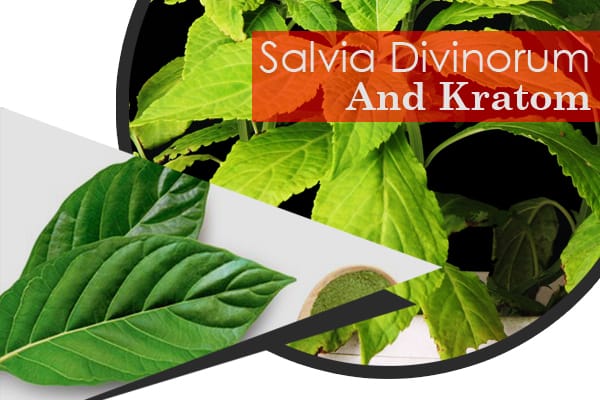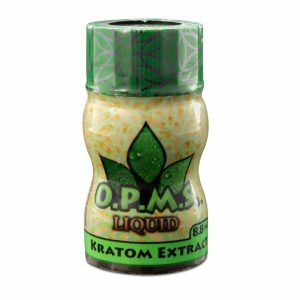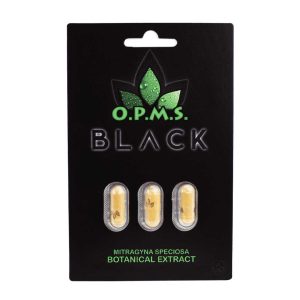
Salvia Divinorum and Kratom- Two Potent Psychoactive Botanicals
Previous post
Kratom Detection Through Drug Tests
You Might Also Like
Next
Prev

Every living being is striving to survive the earth. No matter, it’s an animal being preyed on or some plants trying to move their way up in the food chain, they all try to adapt to the environmental conditions that suit them the best.
So is the case for some herbal plants that have evolved in such a way that they produce certain kinds of chemical components that can not only discourage herbivore animals but also safeguard them from various pathogens. These chemicals can have very specific effects on the mental status of humans when consumed in any form.

The best examples of such herbal plants can be Salvia Divinorum and Kratom. Both herbs contain chemical ingredients that work as active opioid receptor agonists. These agents can stimulate the brain and other systems of the human body in multiple ways.
Belonging to the mint family Lamiaceae, Salvia is a rapidly growing famous herb that has originated from the forests of Oaxaca, Mexico.
This centuries-old plant is a natural psychoactive substance that has been used in religious ceremonies by Mazatec Indian shamans and pagans for spiritual reasons.
However, nowadays, the younger generation is quickly becoming a huge fan of this herb because of its effects being very similar to illegal drugs like LSD, Marijuana, and Ecstacy.
Salvia has many names that include Magic Mint, Seer’s Sage, Sally D, Lady Sally, Diviner’s Sage, Ska Maria Pastora, Shepherdess’s Herb, Incense Special, and Purple Sticky.
It is usually sold as seeds or leaves that can be smoked or chewed without swallowing, as enzymes present in the digestive tract can deactivate its active chemical compound. Another form that is commonly used is Salvia extract, which can either be consumed alone or mixed with Salvia leaves.
Salvia is classified as an extremely potent, naturally occurring hallucinogen. Its active agent called Salvinorin A (Neoclerodane Diterpene) binds to the Kappa opioid receptors (KOR).
A crucial role is played by these receptors in formulating human perception. When Salvinorin A acts as an agonist to KOR, it produces hallucinations and psychoactive effects.
Although these effects take hold almost immediately after ingesting the herb, they last for a short period of fewer than 20 minutes.
As we have said earlier, Salvia Divinorum acts as a hallucinogen. According to many users’ experiences, it can make you see or feel things that might not be there in actuality. Here are some of the effects you might feel after consuming Salvia:
Kratom of the family Rubiaceae is also a popular herbal remedy that is used for various symptoms like discomfort, insomnia, mood disorders, immunological disorders, etc.
Originated in the countries of Southeast Asia like Thailand, Malaysia, Indonesia, Vietnam, and other countries, this natural botanical has been used by locals for common ailments including discomfort and fatigue for the last century.
The most common usage, these days, is to manage opioid withdrawal symptoms as it binds to similar receptors as opioids do.
Kratom is consumed in various forms. Brewing Kratom tea with leaves or ingesting Kratom capsules are the most common methods of usage. Kratom leaves can also be smoked.
Just like Salvia, Kratom -also known as Mitragyna Speciosa- has some chemical agents present that have psychoactive properties. These active agents are the alkaloids that are responsible for all the effects of Kratom.
The two most important alkaloids that are found in abundance in Kratom are Mitragynine and 7 Hydroxymitragynine. Mitragynine is a partial opioid agonist while the latter is known to be even more potent than morphine. These Kratom alkaloids combine with supraspinal kappa, mu, and delta-opioid receptors that in turn prompt the release of endorphins that are known to lift discomfort.
Kratom also acts as a stimulant, as this bonding with opioid receptors also helps in the release of dopamine that in turn enhances the levels of serotonin. These increased chemicals in the human body are said to cause antidepressant effects that can reduce anxiety, depression, and uplift your mood.
There haven’t been any extensive studies being conducted on Kratom’s effect on the human body. Before making any health claims, this beneficial herb needs to be studied deeply.
However, Kratom is widely used all over the world and all of its users have many positive things to say about its effectiveness. According to the users, Kratom is very useful in relieving discomfort conditions, enhancing mood, boosting energy levels, and relaxing the body.
Salvia and Kratom are the two ancient plants that have been used by locals for various ailments, religious, and spiritual purposes. In the 20th century, many instances were recorded where these two herbs were being used recreationally.
Nevertheless, nowadays these botanicals are commonly used by teenagers and adults alike. They are the most popular herbal plants that contain chemical substances capable of acting like opioid receptor agonists.
Moreover, Salvia and Kratom are dubbed herbal highs. This term is coined in resemblance to legal highs, which is a group of psychoactive substances that act as stimulants, sedatives, or psychedelics, and seem to mimic some of the illegal drugs like Cocaine, LSD, Ecstasy, etc.
These psychoactive plants are legal in most parts of the US and are not regulated under the controlled substances law. They are easily available online or in local shops like vape/smoke shops, head shops, and gas stations. Though, some of the states have passed their laws about the regulation of Kratom and Salvia.
The use of naturally occurring psychoactive substances has largely increased all over America in the last two decades. Most users consider them completely safe and harmless, going by the philosophy that what comes from the earth must always be safe.
However, that is not always the case.
Although Kratom and Salvia are consumed by the users because of their benefits, they can still cause side effects when taken in abundance. It is always best to seek professional help in deciding appropriate dosing for your age and weight.


